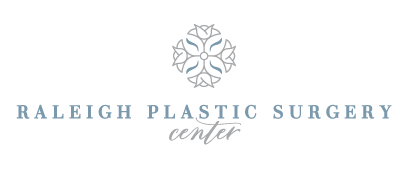Breast Reduction
Breast Reduction is one of the most satisfying procedures that we offer at Raleigh Plastic Surgery Center. This is one of the few procedures that we consider both reconstructive and cosmetic as it is frequently covered by insurance carriers. The final result is certainly an aesthetic improvement but more importantly provides significant relief to neck and back pain which results from large, sagging breasts. Patients who are candidates for an insurance based Breast Reduction require referral by a family practitioner, internist, or gynecologist and must document chronic neck and back pain and provide proof that they have taken non-operative measures to improve this. These measures may include physical therapy, chiropractic care, supportive brassieres, the use of non-steroidal anti-inflammatories, and weight loss measures.
It has been our experience that women with significant macromastia or enlarged breasts do not achieve long-term benefit from these measures and the documentation of their use is a formality. Insurance carriers also require a specific amount of breast removal from each breast during a Breast Reduction, which is based on your height and weight. In many cases, removal of less than the amount that is required is recommended to maintain the appropriate volume. In this case, although you would still benefit from a reduction, insurance coverage would not be available. After evaluation by the plastic surgeons at Raleigh Plastic Surgery Center, and appropriate review of supportive documentation, our insurance specialists will submit for insurance approval for your Breast Reduction.

The Procedure
In many cases, we are able to perform outpatient Breast Reduction surgery in our surgical suites here at Raleigh Plastic Surgery Center on Wake Forest Road. In some cases, however, patients will have surgery performed either as an outpatient or with an overnight stay at a local area hospital that Dr. High utilize. These hospitals include Rex Hospital, Wake Med, or Duke Raleigh. General anesthetic is used and the procedure lasts close to three hours. The location of the incisions depends on the technique. For very large breasted women, the inverted T, or anchor type pattern, is recommended to achieve maximal reduction and skin tailoring to achieve a more attractive smaller breast with a lifted appearance. Smaller reductions can also be performed with a vertical type of breast reduction with a lollipop-type scar, perhaps with a small lateral extension. These so-called minimal scar reductions can be achieved with women of moderate breast size. In very large reductions, the use of a drainage tube may be indicated and they usually are removed within the first week post-surgery.
The Recovery
Breast Reduction patients typically require one to two weeks off from work and avoidance of house work. Recovery is fairly rapid but the use of a surgical brassiere and dressings in the first few weeks is necessary. Scar quality can be improved with the use of long-term incisional taping and scar reducing creams. The final breast appearance takes at least four to eight weeks to become fully apparent after swelling and settling has occurred. The result is a more attractive breast with no sagging, and most importantly, a lighter breast more suitable to your body habitus. The risks of surgery including: wound healing problems, loss of sensitivity of the nipple, asymmetry, and unfavorable scarring. Despite these risks, this is one of the most rewarding procedures that we perform because patients have improvement in symptoms while achieving a better looking breast.
For more tips on how to create a post-op recovery space at home visit our blog!
FAQ
Q: Can you predict what cup size I will be?
A: There is no scientific formula to determine cup size. Cup size is often subjective and depends on the style and manufacturer of the brassiere. Generally, at least 50% reduction in breast size is achieved. Many women remain a C or D cup which is usually a huge improvement. Often, the plastic surgeon can predict a cup size within one or two sizes. However, no guarantees are offered.
Q: How do I know if insurance will cover my breast reduction?
A: Here at Raleigh Plastic Surgery Center, we perform insurance-based breast reductions frequently and our business office is very experienced in guiding you through the process. Generally, documentation by you or internist, gynecologist, or family practitioner is necessary along with evidence that you have attempted relief of neck and back pain with a chiropractor or physical therapist. Most insurance companies require that you have done other measures such as obtaining supportive brassieres and using anti-inflammatory medicines. Patients are encouraged to call our office to discuss this prior to their consultation to determine if they might qualify for Breast Reduction surgery.



